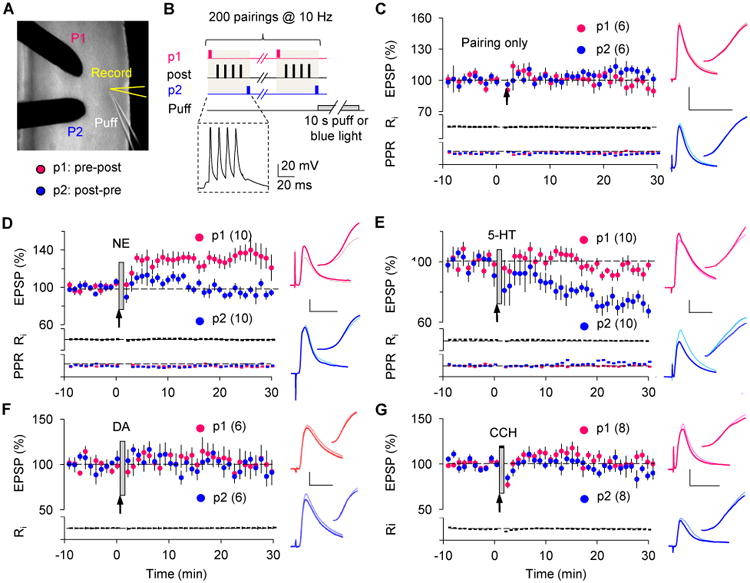Figure 1.

Specific monoamines transform STDP-induced eligibility traces into LTP and LTD.
(A) Two-pathway whole-cell recording configuration.
(B) Induction of eligibility traces with STDP paradigms. A representative response for the two-pathway ST conditioning is shown in the dashed box.
(c) In the visual cortex, ST conditioning alone did not affect synaptic strength in either the pre-post (red dots) or the post-pre (blue dots) pathway.
(D,E) Pressure ejection of NE (50 μM, 10 sec, grey bar) immediately after the ST conditioning (arrow) converted LTP eligibility traces in the pre-post pathway (pre-post in D: 132.3 ± 9.0%), while a similar puff of 5-HT (50 μM) transformed LTD traces in the post-pre pathway (post-pre in E: 73.1 ± 4.5%).
(F,G) Eligibility traces were not affected by pressure ejection of either 50 μM DA (F) or 50 μM CCh (G).
Indicated in parentheses is the number of experiments. Traces in C to G are averages of 10 EPSPs of the two pathways (Red: pre-post; blue: post-pre) recorded in the same neuron immediately before (thin light-color line) or 25 min after (thick dark-color line) conditioning.
Scale: 2 mV, 25 ms.
See also Fig S1.
